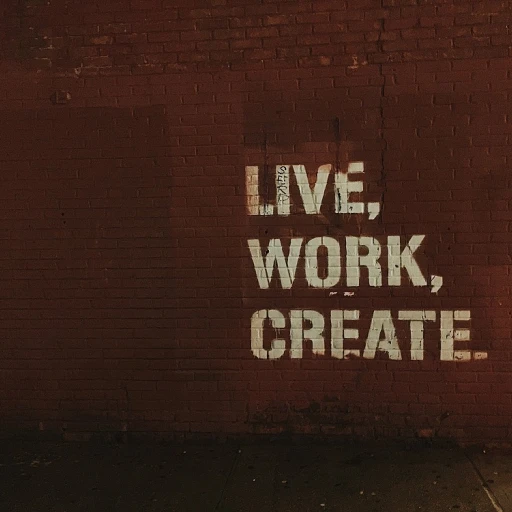Defining DEI and MEI
Exploring Key Concepts: Diversity, Equity, Inclusion vs Merit, Excellence, Intelligence
In the realm of corporate culture, initiatives surrounding Diversity, Equity, and Inclusion (DEI) have gained significant prominence. These initiatives focus on fostering a workplace environment where diverse talents are valued, equitable opportunities are offered, and people feel included, regardless of race, gender, or any other characteristic.
Diversity focuses on the representation of various demographic groups within a company. Equity ensures fair treatment and access to opportunities for all employees, while inclusion relates to creating an environment where everyone's perspectives are heard and respected. Collectively, DEI efforts are foundational to creating a dynamic workplace that reflects today's diverse society.
On the other hand, the concept of Merit, Excellence, and Intelligence (MEI) emphasizes performance-based success. MEI advocates for a merit-based approach to hiring and talent development, where intelligence, skills, and individual performance drive decision making and career progression. This approach aims to cultivate an environment where excellence and innovation are achieved through recognizing and rewarding talent based on measurable outcomes.
Organizations are increasingly recognizing the need to integrate both DEI and MEI to achieve long-term success. While DEI initiatives promote a varied and inclusive workforce, MEI approaches bring focus on performance and problem solving capabilities. Companies strive to balance these seemingly contrasting ideologies to create inclusive excellence—a strategy that considers both diversity equity and merit excellence.
The interplay between DEI and MEI in the workplace dynamics is complex, with each providing unique benefits. As companies navigate this landscape, the integration of DEI practices with MEI-focused outcomes is seen as a pathway toward sustainable growth and innovation in a competitive marketplace.
Historical Context and Evolution
The Evolution from DEI to MEI in Corporate Contexts
The shift from Diversity, Equity, and Inclusion (DEI) to Merit, Excellence, and Intelligence (MEI) within corporate culture is not just a contemporary phenomenon. To understand this evolution, it's crucial to examine the historical backdrop of both initiatives and their impact on workplace dynamics. Both DEI and MEI have marked different epochs in the evolution of organizational culture, each contributing uniquely to how companies define success and encourage innovation.
DEI, as a significant movement, gained traction during the late 20th century, primarily fueled by social justice movements. Corporations introduced DEI practices to foster a more inclusive excellence-oriented environment where diversity in race, gender, and thought are celebrated. DEI initiatives were perceived as a way to correct systemic imbalances and give all people a fair chance at success within organizations. More inclusive environments were thought to lead to better decision making and problem solving, enhancing overall performance and long-term success.
In contrast, the concept of MEI has more recently emerged, emphasizing merit-based hiring and performance excellence. The focus here is on cultivating talent and maximizing intelligence within the team structure. This framework privileges organizational performance and the pursuit of innovation over demographic factors. Companies leaning towards MEI are often rooted in the belief that focusing on individual merit and excellence can propel their organizations to new heights, nurturing a culture of continuous improvement and exceptional outcomes.
As companies strive to find a balance between DEI and MEI, it becomes essential to understand how historical influences and evolving corporate needs have shaped current practices. The tension lies in harmonizing the inclusive diversity efforts of DEI with the merit excellence goals of MEI, aiming to foster a workplace where equity inclusion and individual contribution co-exist seamlessly.
The Impact on Workplace Dynamics
The Influence of DEI and MEI on Work Environments
The workplace is evolving, with companies increasingly recognizing the importance of integrating both DEI and MEI into their corporate culture. This shift is transforming workplace dynamics by fostering environments where diversity, equity, and inclusion (DEI) coexist with merit, excellence, and intelligence (MEI). DEI initiatives drive organizations to foster diversity in race, gender, and experiences. This collective diversity brings myriad perspectives, enhancing problem-solving capabilities and sparking innovation. With this diverse background, employees can approach challenges from different angles, promoting inclusive excellence and innovation. On the other hand, MEI focuses on merit-based recognition, ensuring that individuals' talents and intelligence determine success. This approach emphasizes hiring and nurturing top talent, pushing businesses towards performance excellence. By creating a culture of merit, organizations bond employees to shared goals of success and excellence. One of the primary benefits of combining DEI and MEI strategies is the creation of a balanced workplace. By valuing diversity equity and inclusion alongside merit excellence, companies not only benefit from enhanced innovation and problem solving but also ensure fair and unbiased decision making. This dual approach is essential for long-term success. As companies prioritize equity inclusion and merit-based success, they fuel healthier organizational dynamics. DEI practices enrich the culture with diverse perspectives, while MEI ensures sustained excellence by rewarding talent and intelligence. In conclusion, by embracing both DEI and MEI principles, organizations can drive robust initiatives leading to improved workplace performance, fostering an environment where diversity, inclusion, and merit flourish in harmony.Balancing DEI and MEI in Practice
Strategies to Create an Inclusive and Merit-Based Culture
In modern organizations, balancing diversity, equity, and inclusion (DEI) with merit, excellence, and intelligence (MEI) is vital for long-term success. Integrating both principles involves strategic decision making and intentional actions that consider performance, talent, and innovation in the workplace.
Organizations should prioritize these strategies to harmonize DEI and MEI effectively:
- Establish Clear Metrics: Set measurable goals for DEI initiatives and MEI-driven excellence. Use metrics to gauge hiring practices, talent performance, and equity inclusion rates to achieve balance.
- Foster Inclusive Excellence: Develop an environment where diverse perspectives contribute to problem-solving and innovation. Encourage a workplace culture where race, gender, and other differences enhance rather than hinder organizational success.
- Promote Balanced Hiring Practices: Implement merit-based hiring while ensuring diverse representation. By doing so, organizations can leverage both the unique perspectives of a diverse workforce and the excellence intelligence of top talent.
- Continuous Reevaluation and Adaptation: Ongoing assessment of DEI and MEI initiatives is essential. Regular analysis helps organizations align their practices with evolving societal expectations and business needs.
- Engage Leadership Commitment: Leaders must champion DEI practices and merit excellence equally. Their commitment influences organizational culture and encourages others to value both DEI and MEI.
By integrating these strategies, companies can cultivate a dynamic and equitable workplace environment, ultimately leading to sustained success and improved organizational outcomes.
Case Studies and Real-World Examples
Company Examples Showcasing the DEI and MEI Balance
Companies across diverse industries continuously strive to achieve a harmonious balance between Diversity, Equity, and Inclusion (DEI) and Merit, Excellence, and Intelligence (MEI) principles. These initiatives are often leveraged to drive innovation and sustainable success.- Tech Sector: A leading tech company has implemented hiring practices that equally emphasize inclusion and merit. By combining DEI diversity programs with merit-based evaluations, the company ensures that talent excellence isn't compromised while enabling a rich workplace of diverse perspectives. The focus here is on inclusive excellence, fostering a culture where race, gender, and other factors don't overshadow performance-based advancements.
- Finance Industry: A global financial organization recently introduced DEI initiatives that prioritize equity inclusion and innovation. By creating a balance of DEI efforts and MEI merit evaluation systems, the company promotes an environment where team dynamics are enhanced. Here, a merit excellence model provides a foundation for decision making, encouraging long term term success.
- Retail Business: Companies in the retail sector are utilizing DEI practices by implementing diversity equity measures to enhance their customer relations. By offering equal opportunities and merit excellence pathways for advancement, retail businesses aim at improving their service intelligence, and thus overall performance. These companies showcase how aligning DEI programs with a merit-based recognition system can elevate problem solving capabilities.
Lessons from Real-World Practices
Through these practical implementations, organizations showcase how they manage the nuanced balance between DEI and MEI. The key lesson here revolves around creating DEI initiatives that are coherent with organizational goals for excellence intelligence. This ensures that companies don't merely check the box on diversity equity inclusion but also leverage these aspects for growth and success. Real-world examples indicate that companies achieving this balance experience not only enhanced workplace cohesion but also increased innovation and adaptability. By prioritizing principles that blend DEI and MEI, organizations can mold a corporate landscape that thrives on both fair representation and superior performance.Future Trends and Considerations
Anticipating the Future: Navigating Changes in Corporate Inclusion and Distinction
The world of corporate culture is undergoing significant transformations, driving companies to rethink and adapt their approaches to diversity, equity, and inclusion (DEI) alongside merit-based excellence (MEI). As organizations continue to embrace DEI initiatives, there's a growing recognition of the need to integrate MEI to achieve long-term success. Looking forward, companies must consider the following trends and strategies:- Data-Driven Decisions: As more organizations invest in DEI programs, leveraging advanced data analytics can enhance decision-making processes. Analytics offer an opportunity to assess the impact of DEI practices and their alignment with MEI, ensuring a balanced workplace environment.
- Technological Innovation: Innovation will continue to play a crucial role in shaping equity and inclusion efforts. With the rise of AI and machine learning, workplaces can refine their approaches to talent acquisition, enabling more inclusive hiring practices that prioritize both diversity and intelligence.
- Evolving DEI Metrics: Traditional metrics are transforming as companies seek more meaningful ways to gauge DEI efforts. Future-focused organizations may develop new performance indicators that reflect both diversity equity and merit excellence, fostering an environment where all individuals can excel.
- Inclusive Excellence: The intersecting demands of DEI and MEI will necessitate a focus on inclusive excellence—harnessing diverse talents and perspectives to drive workplace innovation and problem-solving.
- Global Influence and Adaptation: As businesses expand across borders, understanding cultural nuances and adapting DEI and MEI strategies to fit local contexts will be imperative. Companies must foster a culture that respects race, gender, and cultural differences, enhancing their global impact.












